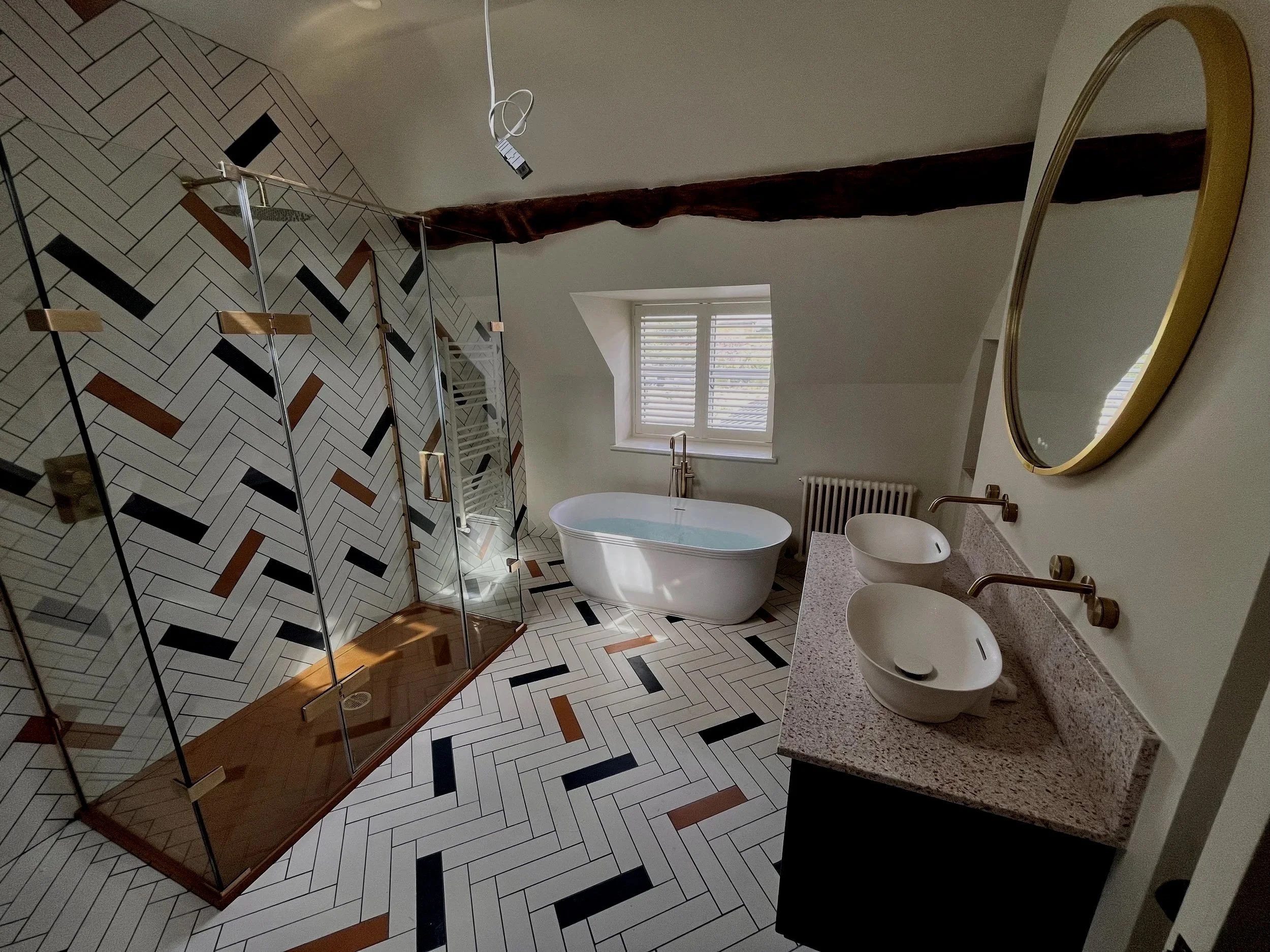Wet Room vs. Traditional Bathroom: Which Suits Cotswold Homes Best?
For many Cotswold homeowners, the bathroom is more than a practical space — it’s a retreat. Whether you live in a stone cottage in Broadway or a renovated Georgian home near Cheltenham, the right bathroom design can elevate both comfort and property value.
But one big question often arises during a renovation:
Should you choose a wet room or stick with a traditional bathroom?
Both options offer distinct benefits, but when it comes to heritage properties and rural homes, the decision deserves careful thought.
Let’s explore which is best for your home, your lifestyle, and your long-term investment.
What Is a Wet Room?
A wet room is a fully waterproofed (tanked) bathroom where the shower area is open or only partially enclosed — allowing water to drain directly through a floor gradient.
It’s sleek, minimalist, and perfect for creating a sense of space — even in compact bathrooms.
Key features of a wet room:
Level-access walk-in shower
Fully waterproofed flooring and walls
Discreet drainage system
Ideal for modern, open-plan designs
What Is a Traditional Bathroom?
A traditional bathroom separates each area — bath, shower, and toilet — often with raised shower trays and enclosed cubicles.
In period or listed homes, this layout complements original architecture, allowing for the inclusion of roll-top baths, panelled walls, and classic brass fixtures that echo the property’s character.
Key features of a traditional bathroom:
Enclosed shower or bath
Distinct “zones” for each function
Ideal for maintaining heritage style
Often easier to install in older buildings
Wet Rooms in Heritage Homes: Can It Work?
Many assume wet rooms are only for new builds or modern flats — but with expert planning, they can be adapted beautifully for Cotswold stone and listed homes.
The biggest consideration is flooring and waterproofing. Older homes often have uneven floors or timber joists, which require professional tanking and subfloor reinforcement.
When done properly, a wet room can:
Add a sense of modern luxury
Improve accessibility for all ages
Increase property value through practical design
However, without proper drainage planning, water can seep into floors or lower rooms — making skilled installation essential.
The Pros and Cons at a Glance
-
Elegant, open-plan design
Easier to clean (no shower trays or glass doors)
Perfect for accessibility and mobility
Can make small spaces feel larger
-
Requires expert waterproofing
May feel colder without underfloor heating
Potential for splash zones if not designed properly
-
Classic aesthetic suited to period homes
Easier installation and repairs
Defined zones for showering and bathing
Often warmer and cozier
-
More fixtures and edges to clean
Can feel smaller or more enclosed
Less accessible for those with mobility challenges
Which Option Suits Cotswold Homes Best?
For heritage and period properties, a hybrid approach often works best — blending traditional charm with modern practicality.
Example:
A wet-room-style walk-in shower paired with a freestanding roll-top bath creates a luxurious spa-like space without losing authenticity.
Natural materials like limestone tiles or reclaimed oak flooring can tie modern waterproofing with Cotswold character.
Heating & Water Considerations
When upgrading to a wet room, it’s essential to ensure your boiler and water pressure system can handle the flow rate.
For homes with gravity-fed systems, a booster pump or unvented cylinder may be needed for optimal shower performance.
Underfloor heating also pairs well with wet rooms — not only does it keep the tiles warm, but it also helps moisture evaporate faster.
The Bottom Line
If you own a modernised barn, converted farmhouse, or listed townhouse, your bathroom design should balance style, function, and longevity.
Choose a wet room if you want minimalism, accessibility, and a modern touch.
Choose a traditional bathroom if you value warmth, heritage aesthetics, and simpler installation.
Or blend both for the ultimate Cotswold retreat — timeless elegance with modern practicality.
Book Your Bathroom Consultation in Worcestershire & the Cotswolds
Our expert plumbing and renovation team specialise in heritage bathroom design, combining modern engineering with traditional craftsmanship.
Full wet room and traditional bathroom installations
Underfloor heating and waterproofing systems
Heritage-friendly plumbing solutions
Free design consultation and transparent quotes
📞 Call us today to arrange your consultation
📧 Request a free design estimate via email
🌿 Trusted by homeowners across Worcester, Evesham, Broadway, and Cheltenham


